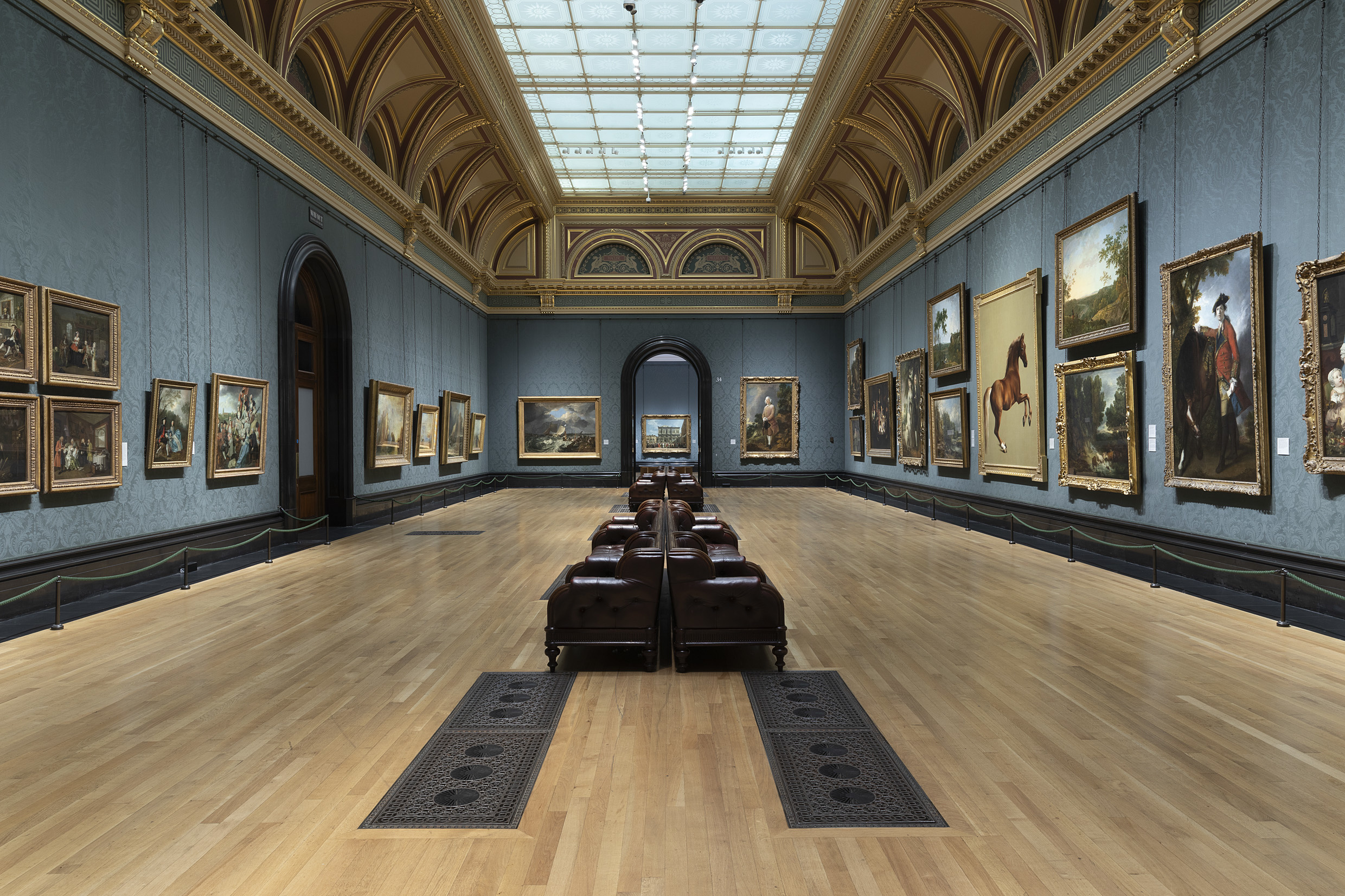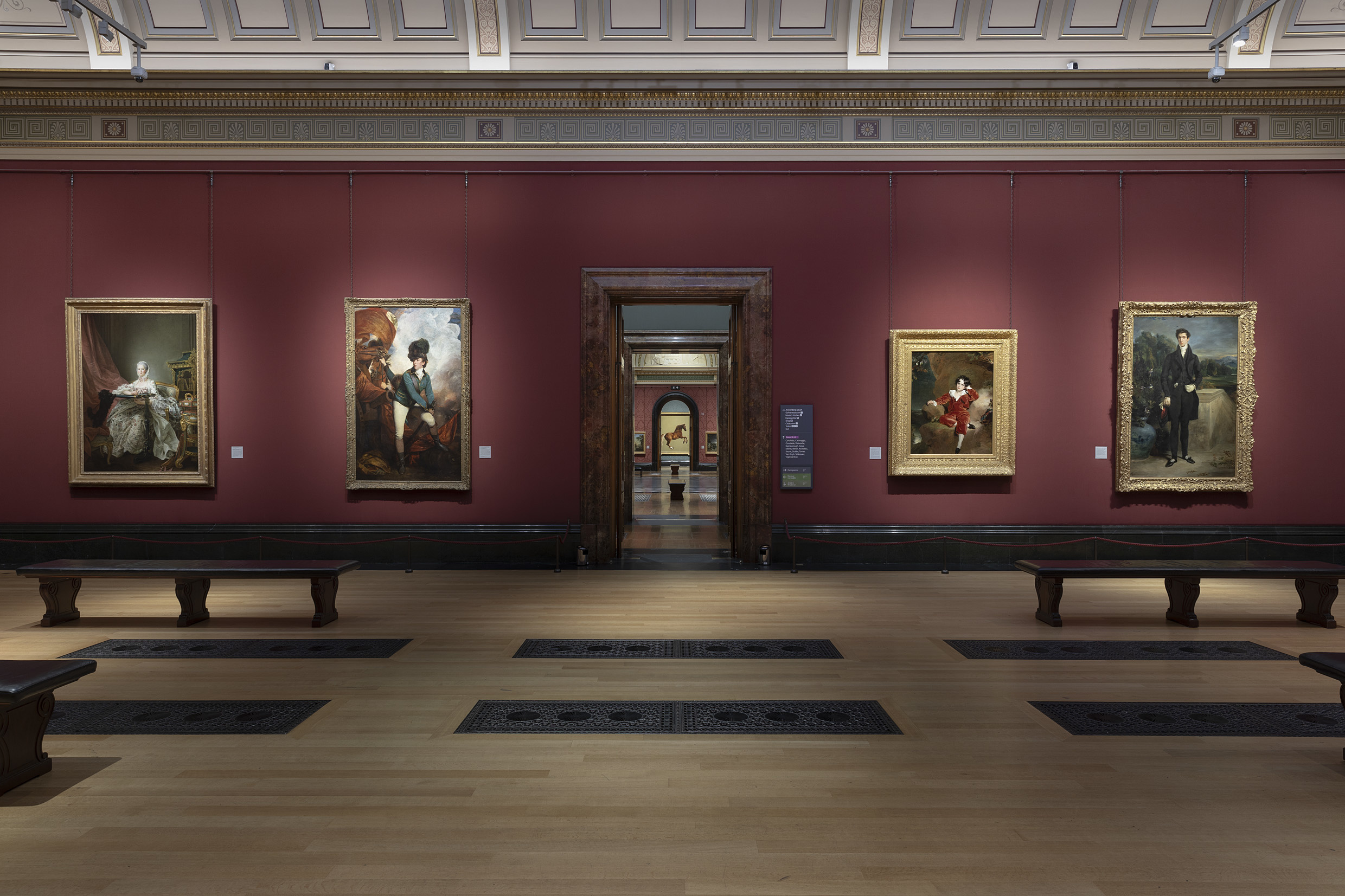The National Gallery rehang: 'It is a remarkable feat to hang more with the feeling of less', but the male gaze is still dominant
Almost everything on display at the National Gallery has been moved — and paintings never previously seen brought out — in one of the the biggest curatorial changes in the Gallery's history.


Born and raised in London in the late 1980s, the National Gallery was my gateway art drug. Positioned as it is, in the tourist heartland of Westminster, overlooking Admiral Nelson, four gargantuan lions and the respective top and tip of the Houses of Parliament and Mall, it feels ever-present and immovable.
I still think about my first encounters with Belshazzar and the Bird Experiment as a kid in wonder. This was, of course, pre-Tate Modern and Fourth Plinth, an aesthetically simpler time. A trip around it has always felt like a much-loved grand old rollercoaster or a flick through your parent’s best photo album — the one with pictures of your parents grinning fecklessly in fancy dress.


I approached its £85 million rehang with curiosity. Could the curators do justice to this critical collection in a new format, veering from its traditional chronology? Such things are easy to misjudge (especially done by committee), but there are good recent precedents such as the nearby Tate Britain under the thoughtful eye of director Alex Farquharson.
As I entered through the Sainsbury Wing entrance, I was struck by the decision to open up what was previously a rather dark and strangely cluttered space. The former shop has gone and visitors are now greeted with large windows, which flood light into the atrium, and an enormous mega-screen highlighting works from the collection. There is a new restaurant en route to the galleries and, at the top of the stairs, I was greeted by an eye-catching new Richard Long commission, one of only a couple modern additions to the collection alongside Bridget Riley’s Messengers. This is refreshing, but I’m reminded by Alex, my guide, that the collection stops firmly at 1900. These installations are outliers in an otherwise antique landscape.

The delicate rehanging of Antonio del Pollaiuolo and Piero del Pollaiuolo's The Martyrdom of Saint Sebastian (completed in 1475).
It’s testament to the immovable nature of the National Gallery that the Sainsbury Wing, opened by the late Queen in 1991, still feels relatively new, despite the fact that it is the same age as my very much grown-up younger brother. The rehang here feels more organised, operating along a main transept, which charts the journey from flatness to perspective in church art. The elegant grey tones of the walls feel at once modern and old — they work very well. More focussed galleries are wonderful and provide much needed intensity. The Piero Della Francesca room in particular radiates spirituality.
At first glance, changes are not immediately obvious in the museum’s central complex, but the small mixed-hang space near the western entrance, which highlights artistic inspiration and connections, is an immediate joy. I was struck by two portraits side by side by Rembrandt and Titian, the former took the latter as inspiration and the hang makes this point elegantly. Site lines are thoughtful and impactful and there are touches of brilliance, notably the Turner and Constable double act and mind-blowing Titian gallery set in deepest lagoon blue. New colour schemes have been meticulously chosen and the utilisation of new space also draws the rehang into focus.
Works have been hung on previously empty spaces like stairwells — a simple masterstroke of economy. The new hang feels lighter, but it in fact utilises more of the collection. It is a remarkable feat to hang more with the feeling of less.
Exquisite houses, the beauty of Nature, and how to get the most from your life, straight to your inbox.
Portraits of The King and Queen seem oddly out of place, as if a curator from the neighbouring National Portrait Gallery snuck in and mucked around, but these are on temporary loan. They will, I'm told, bring in a new audience to the museum. I would question the position of the Monets, which feel a bit tucked away in a slightly awkward space. It’s also a shame the curators did not give a more prominent position to Artemisia Gentileschi's iconic self portrait and this does highlight the overwhelmingly male gaze that the National Gallery exudes. It’s a stark reminder that there is much work to be done to cement the reputation of a more diverse roster of historic artists by institutions and dealers.
There is also a feeling that the project is an endless piece of string due to its scale, and the space is not decorated within an inch of its life — if you look hard, you can still see tiny worn touches such as holes in fabric wallpapers from previous hangs. This has charm, but it also reinforces the fact that museums like the National Gallery are having to work in a constrained way to evolve.
Nevertheless, the refresh is accomplished and comprehensive; it breathes new life into old spaces and artworks. Although there is dynamism with more dialogue between the work and setting, don't expect anything radical.
This is the same old, much-adored rollercoaster and its careful reimagining does have impact and has involved more than just a lick of paint.
James Elwes founded contemporary gallery TIN MAN ART in 2021. His artworld insight is the result of nearly two decades of experience in the industry gained across commercial galleries, fairs and institutions. Working closely with artists, he draws on his experience and insider knowledge to develop collections and commissions alongside facilitating acquisitions and loans to public institutions.
James Elwes founded contemporary gallery TIN MAN ART in 2021. His artworld insight is the result of nearly two decades of experience in the industry gained across commercial galleries, fairs and institutions. Working closely with artists, he draws on his experience and insider knowledge to develop collections and commissions alongside facilitating acquisitions and loans to public institutions.
